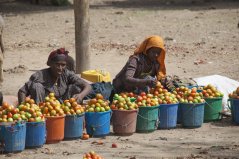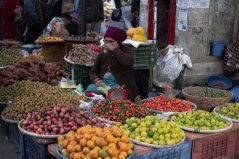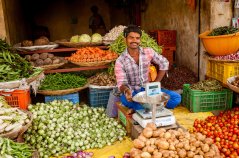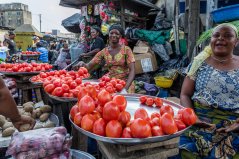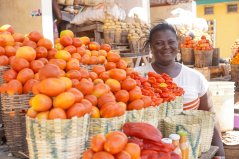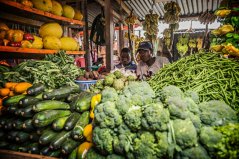
Results from the global scoping study on fruits and vegetables
Millions of people in Asia and Africa struggle not so much with a lack of food, but with too little healthy food. This is mainly because fruits and vegetables are simply more expensive and less available than less nutrient-rich foods. In addition, agricultural policy and development programs have long focused too much on grains and, in the case of vegetables, on onions and tomatoes and not on much healthier leafy vegetables.
This has to change, conclude our researchers in a study in which they examined the state of fruit and vegetable consumption in low- and middle-income countries and the food systems of seven countries.
About the research
The study focused on the consumption and production of fruits and vegetables as part of the food system in low and middle income countries, and in particular in seven low-income countries. The researchers first mapped trends in global and regional food systems, with a focus on South Asia and East and West Africa. In the country study, the researchers zoomed in on Bangladesh, Ethiopia, Nepal, Nigeria, Tanzania, India and Burkina Faso.
Synthesis
Among many findings, three prominent conclusions stand out:
1. Fruit and vegetable consumption in these regions is too low to prevent the risk of malnutrition and this problem affects all layers of society.
2. The consumer prices of fruit and vegetables are high, and the availability too low, so that households cannot afford healthy food.
3. There are many obstacles for women to earn more money from the production, trade and processing of fruit and vegetables. These barriers are part of a wider problem of inequality facing women in agriculture.
Read the conclusions of the studies here.
Recommendations for policy
Among the many recommendations, three prominent ones are as follows for improving policy:
- The complexity of enhancing the consumption of fruits and vegetables, and increasing economic benefits of supply and production by women, calls for an application of the food system approach to their specific contexts, clearly identifying the leverage points for philanthropic investments.
- There is no ‘one size fits all’ solution and interventions have to be well tailored to their historically evolved, socio-economic and political contexts.
- ‘Food = identity’ and changes in dietary practices often come with resistance. Putting these learnings into investments and action will require the engagement of all domestic stakeholders who play a role or benefit from food system changes aspired.

